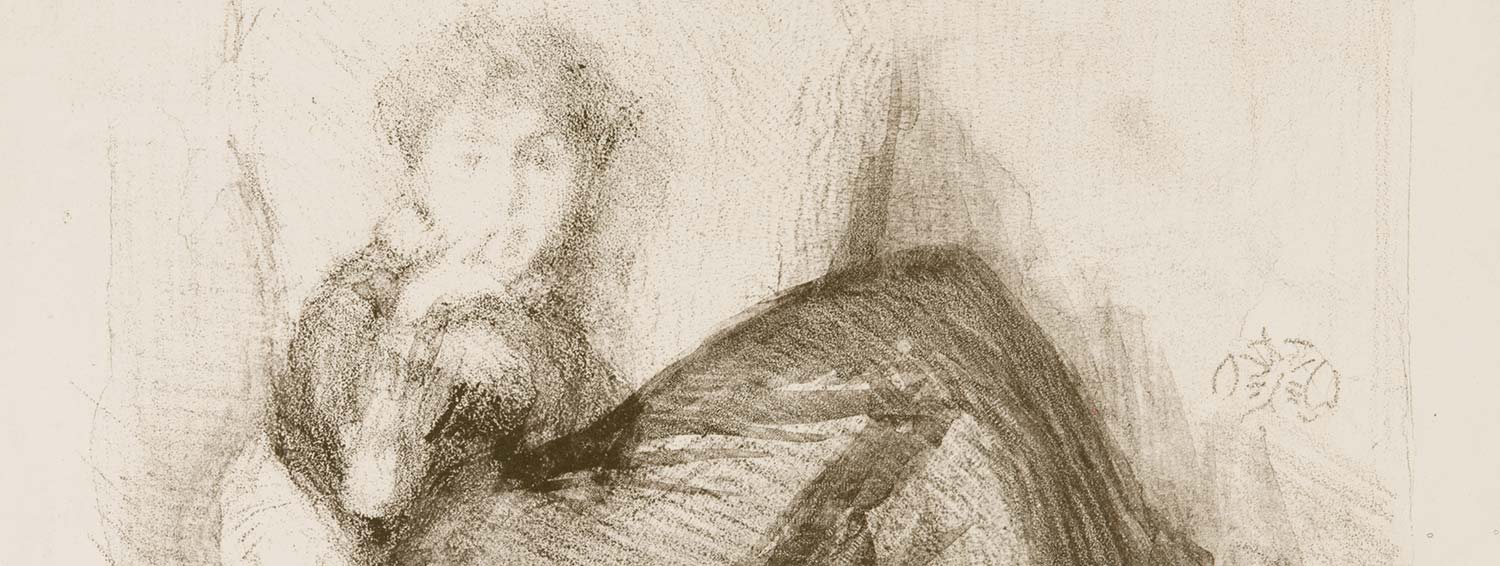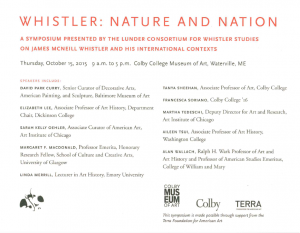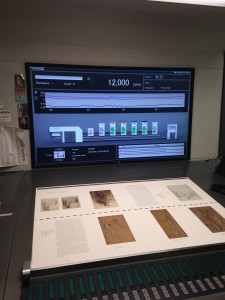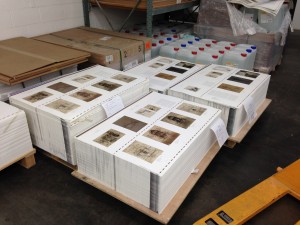Currently open at the Arthur M. Sackler Gallery in Washington, DC.
This is an exhibition about a painting that does not exist. A rescued fragment of the large painting, numerous figure studies, and the frame that Whistler decorated specifically for the finished work are among the tantalizing clues that hint at the masterpiece that might have been.
The saga began in 1867, when American artist James McNeill Whistler (1834–1903) received a commission from a promising new patron, the nouveau riche shipping magnate Frederick Richards Leyland (1832–1892). Leyland paid the artist to create a “symphony in white,” the fourth in a series of figurative works in which Whistler experimented with idealized arrangements of color and form. If Whistler had completed the large painting, it would have hung opposite his Princesse du pays de la porcelaine (Princess from the Land of Porcelain) in Leyland’s dining room in London.
For ten years Whistler painted and repainted the picture that he called The Three Girls, yet he was never satisfied with it. His act of creative exuberance in redecorating Leyland’s dining room as Harmony in Blue and Gold: The Peacock Room in 1876 and 1877 both produced a masterpiece and destroyed the friendship between artist and patron. Soon thereafter Whistler destroyed The Three Girls as well.
The story of Whistler’s decade of work on The Three Girls, his numerous studies, and his countless repaintings follows the artist’s path to aesthetic mastery. The destruction of the never-completed picture and the afterlife of its repurposed frame illuminate Whistler’s less-rarified preoccupation with patronage, payment, and professional reputation. These themes are at the heart of the complementary exhibition Peacock Room REMIX: Darren Waterston’s Filthy Lucre, which reimagines Whistler’s decorative masterpiece as a site of creative destruction. To learn more visit The Lost Symphony website.




